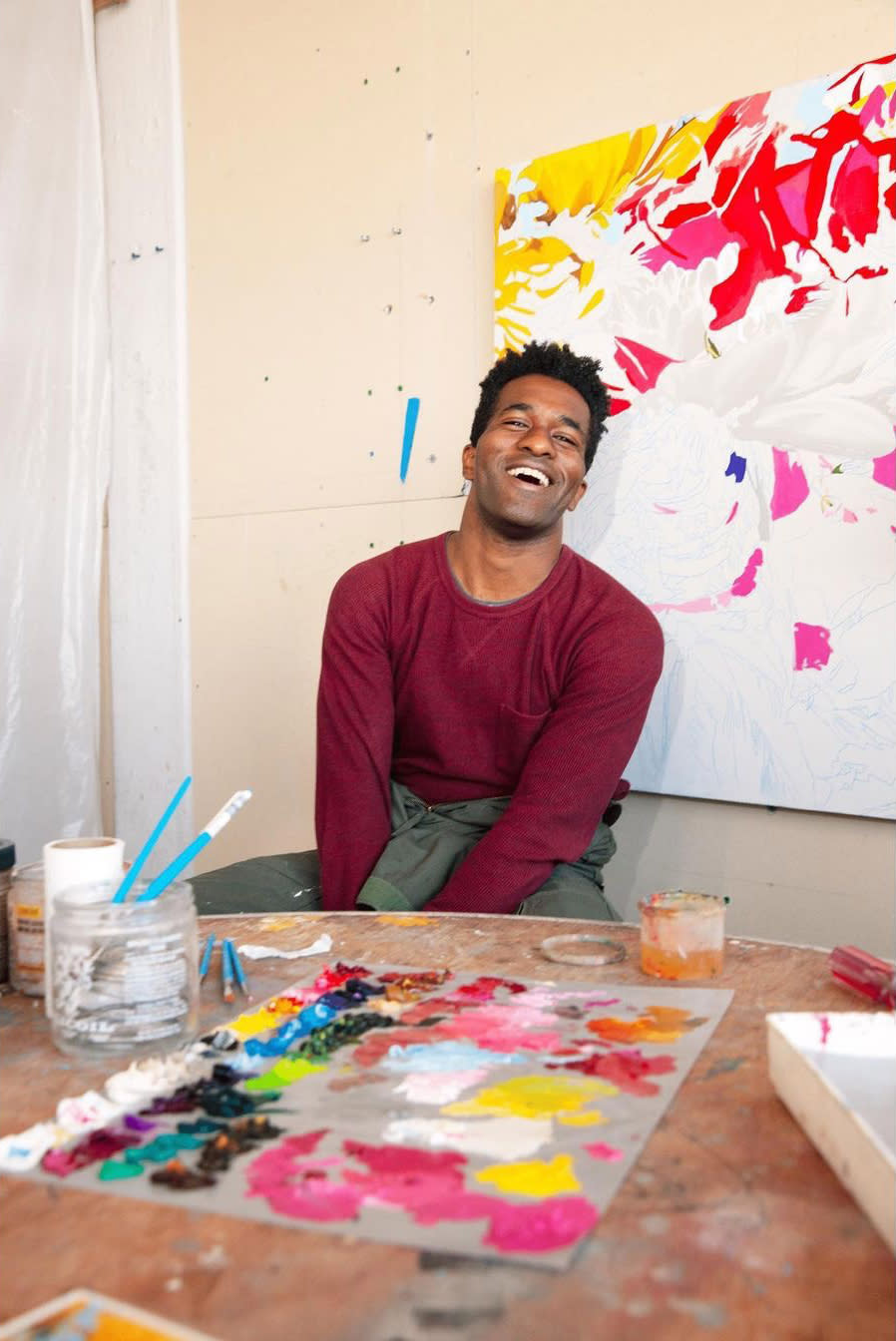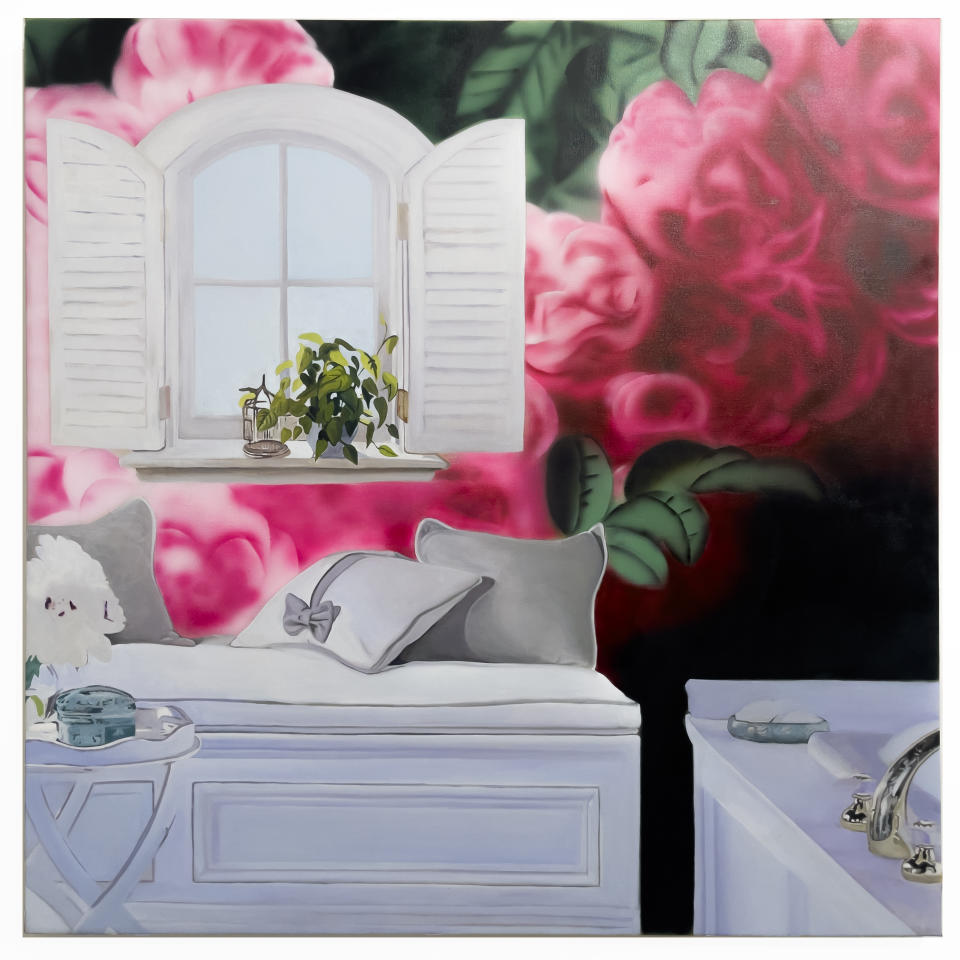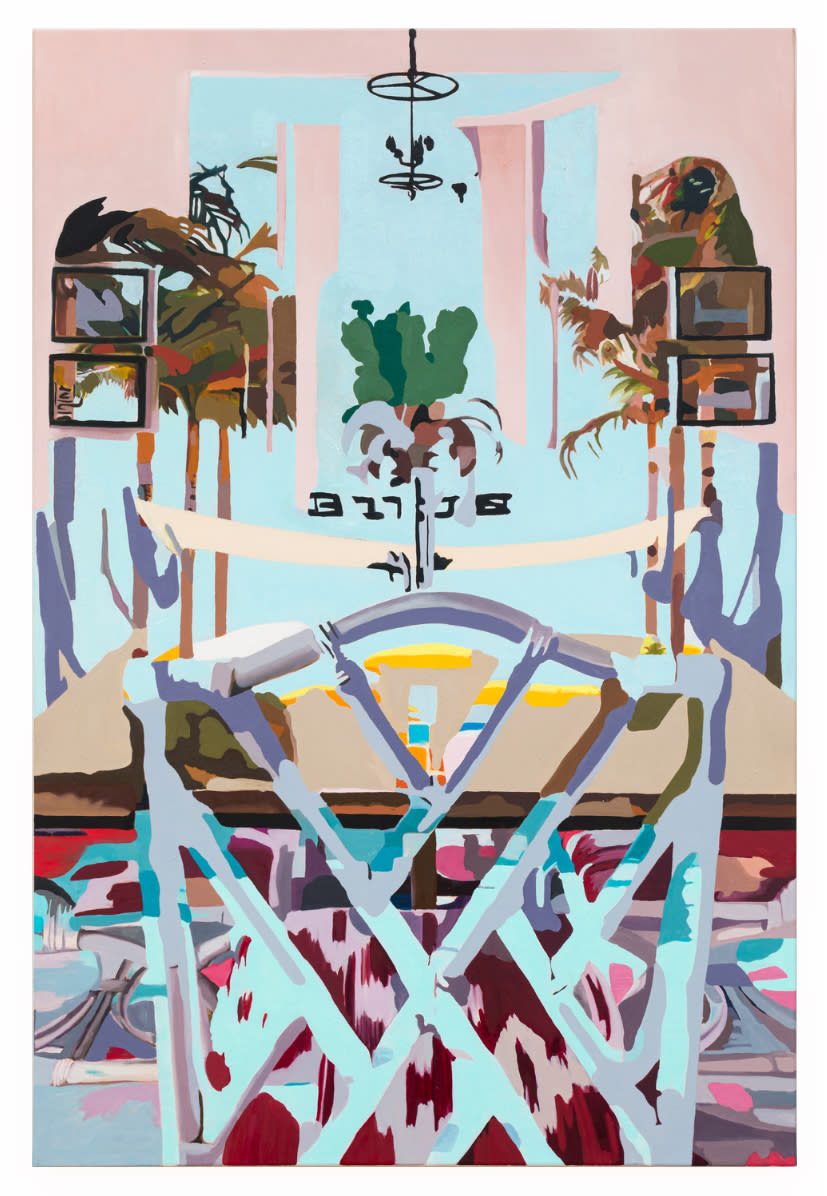The Canvas Underground: Darryl Westly Brings the Social Scene to His Studio

Our editors independently select the products we recommend. We may earn a commission on items bought through our links.
Before the likes of Marcel Duchamp or Frida Khalo were icons, they were just people trying to make art. In the spirit of celebrating emerging artists and would-be patrons, SPY regularly bar hops with future luminaries for The Canvas Underground, a look at the next next-big-thing.
Today's Top Deals
This time, SPY met with Darryl Westly, a New York City–based painter and artist who has shown in galleries and exhibitions all over the city. Westly has a background in nightlife, which has deeply informed his work—the people and places he experiences often informing the subjects rendered in his paintings. During the conversation at the Grand Central Oyster Bar, he also doodled away on a napkin.

SPY: The pandemic seems to be somewhat squarely in the rearview now, with art galleries and restaurants like this one open again. How did you, as an artist, manage your creativity during those years? Creatively stifling or giving you the time to work more?
Darryl Westly: Early on, I was at a very rapid rate. I was able to work, I was able to focus, and I also had a community of artists that I was interacting with online, like using Zoom and things like that. I was able to create this community. I’d say it was really kind of raw. The focus on what it was mainly, going and talking to other African American artists in New York, some of them were classmates of mine, and others were just peers. I could say something about how I spent more time in the studio and less time in public, but I realized in the pandemic how important it is to have a balance between different things. The work is informed by life and by engaging with people and things. Having the mindset of having to go, go, go, gotta work on this thing, it’s not giving each thing its due time. So now, I keep a kind of equilibrium. I think I’m kind of returning to that equilibrium of going out and spending time in the studio.
SPY: A lot of artists wait tables early in their careers to have the hours to work on their art. You went into nightlife. How did those hours and that field influence the things you were doing in the studio?
DW: There’s the lack of a hierarchy that’s nice. There’s something for me intrinsically in nightlife, where I see the divisions between people start to fall apart. Whether that’s race or class or whatever. There’s something about the dark, and having these curated experiences for your senses, where there are libations, and that’s where you find commonality. I found that really interesting. I had all these conversations with people I otherwise wouldn’t have been able to.
There’s something about nightlife, particularly nightlife in New York, that allows for people to reach across barriers. That was attractive, because even within an art environment, you might expect to be open, there are still a number of delineations and different ideas going on that don’t exist in nightlife.

SPY: Being a working artist, what are some things you experienced in the process of your come-up that you didn’t necessarily expert to happen that people just starting out might be better aware of?
DW: There are things like exhibition planning, mapping out finances, or taking on work managing a schedule of output for your work that’s reasonable. I was recently talking with a friend of mine about preparing for an exhibition, and the amount of time that it takes to make that world. Then, there’s a stint of time between executing that, and receiving the payment for the work, which can vary depending on the client. That can be a big issue with, say, an artist creating a large body of work for a large space versus a smaller piece. Which one is going to require more time? Potentially an artist isn’t making any sales during the process of making the one larger piece for that show.
It’s important to be able to create a certain amount of balance in between how you’re putting work out there both on and off the online auction platforms too. I’ve had experiences where work can be priced at its primary market value, but because it’s on a platform or in a sale, that work may not sell. That can be very disheartening, either for the auctioneer or the artist. We’re pros, but I think creating the kind of situation or playing field in which you’re able to take as many swings as you possibly can with your work, is really one of the most important things.
SPY: How did you develop your style? What is the “Darry Westly” look of a painting? There’s plenty of figures and people in them, are they people from your life?
DW: At first, it’s throwing things against the wall and seeing what I’m attracted to, or thinking about a certain kind of group or conversation. Again and again, the importance of being out there and socializing stands out. Having these conversations about things or observing people and culture, it informs you. My work starts with people or memories, and then it’s trying to infuse my own history and experiences from childhood. I’m trying to edify experience — the parts of my life where there have been struggles or issues or things that are pillars in my memory.
To a certain extent, each painting is a self portrait, because it means my view of the world and the way I see something is on display. Now, I’m able to go on and build upon it, and kind of reach out. I do see painting, and art, ultimately, as a process of starting small to germinate an idea from a pinpoint to reach outward. Different artists kind of have different approaches. Some artists start broad and go smaller, you know? It’s a bit like creating a narrative.

SPY: How technical is the work when you’re starting on a new painting? If we peeled back all the layers here, would we see the little pencil marks of a sketch or do you find it on the fly?
DW: I’m definitely more on the technical side of things. I start with maybe a written word or an image that’s floating around in my head and then it’s working through the piece like photography. There’s elements of graphic design and drawing in my work that I’m implementing. There’s a sense of composition and the scene that I’m setting up. For instance, I’ll look at the word “seder,” in the Haggadah. I spent a number of weeks researching a number of illustrated examples of the book and different iconic books, and then seeing the different ways in which people approach the Seder. And then I’ll try to conceive a work from that research. I find that process of research very cool and rewarding.
SPY: Was there an early note or piece of constructive criticism you got that helped your work going forward?
DW: A criticism that I got early on was to speed up the process of making work. I was dealing with a collector that was very critical about processes and things like that, or just like what amount of time was spent on work. I realized that each step and each part of the way that I go and do what I do is a part of who I am, it’s part of where I am. It was a really eye-opening experience in terms of how it allowed me to be able to go and evaluate for myself exactly how my work functions. What’s intrinsically important to me in terms of what gets communicated through my work and the integrity of the work. Some things obviously can take longer, some things obviously can take shorter amounts. But there is not a one-size-fits-all approach to making the types of work that you do as an artist. It’s the difference between writing an essay and writing a novel.
More Top Deals from SPY
Best of SPY

